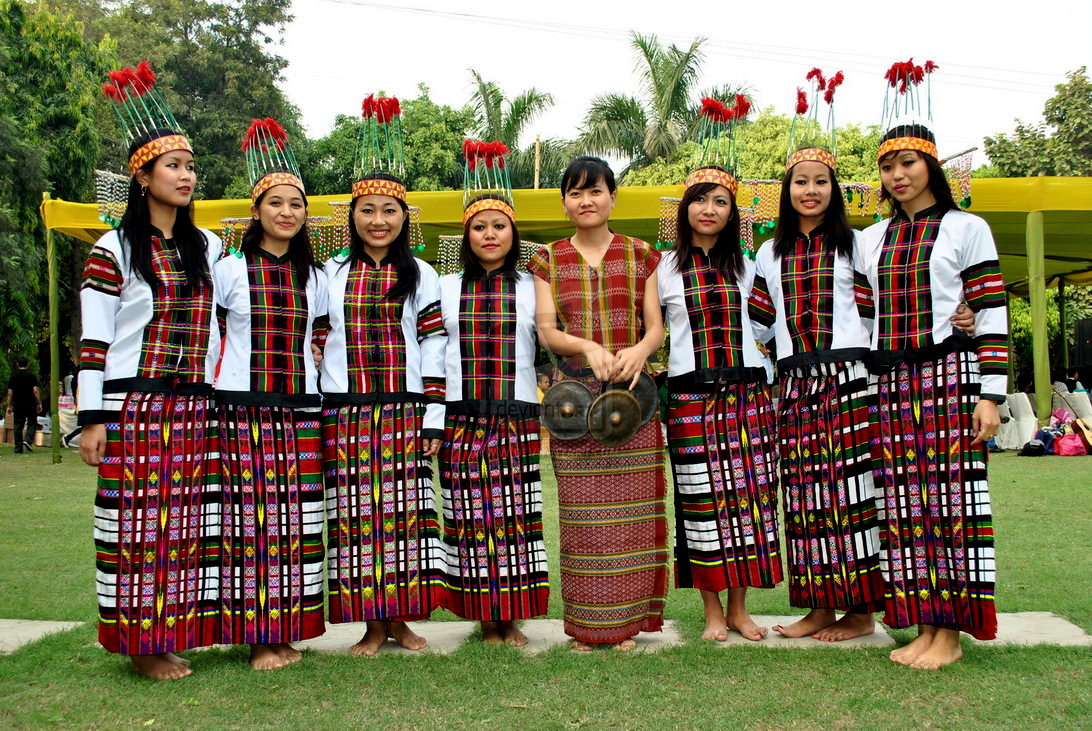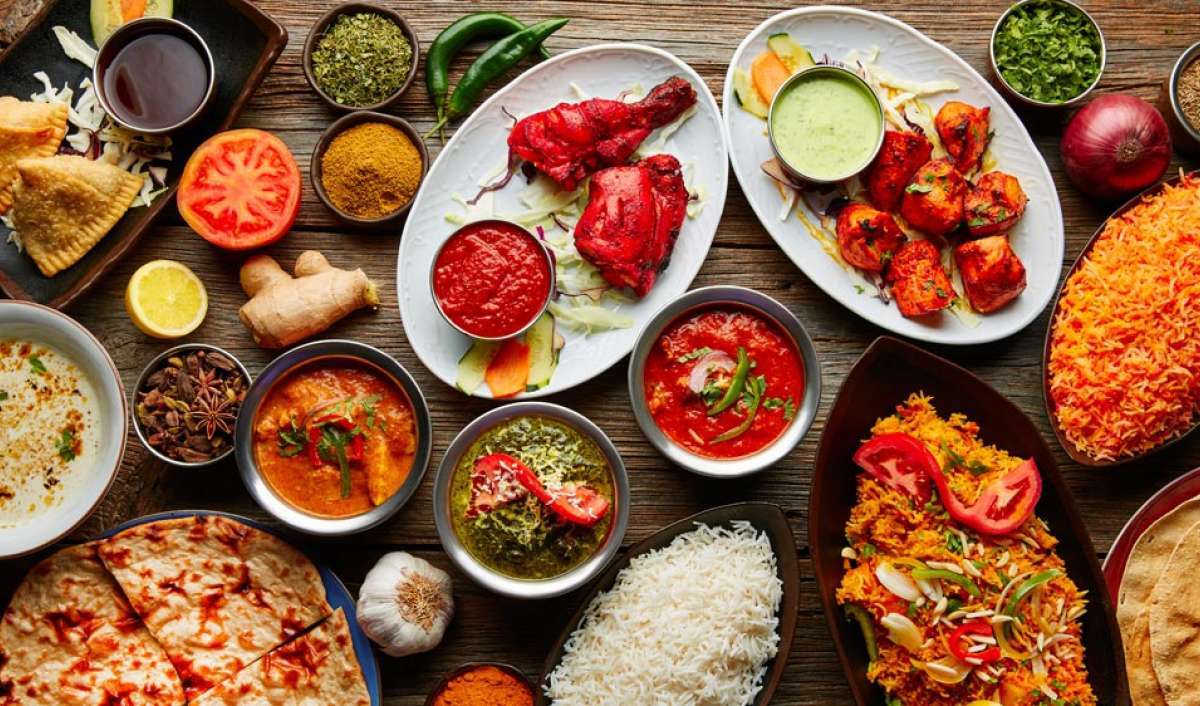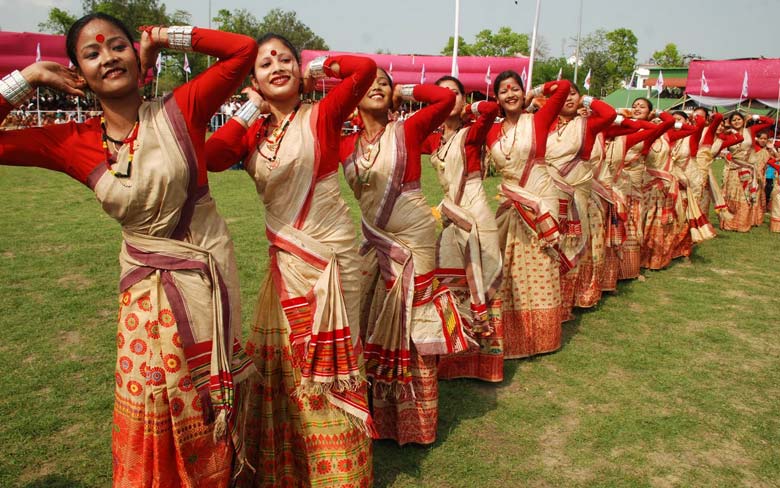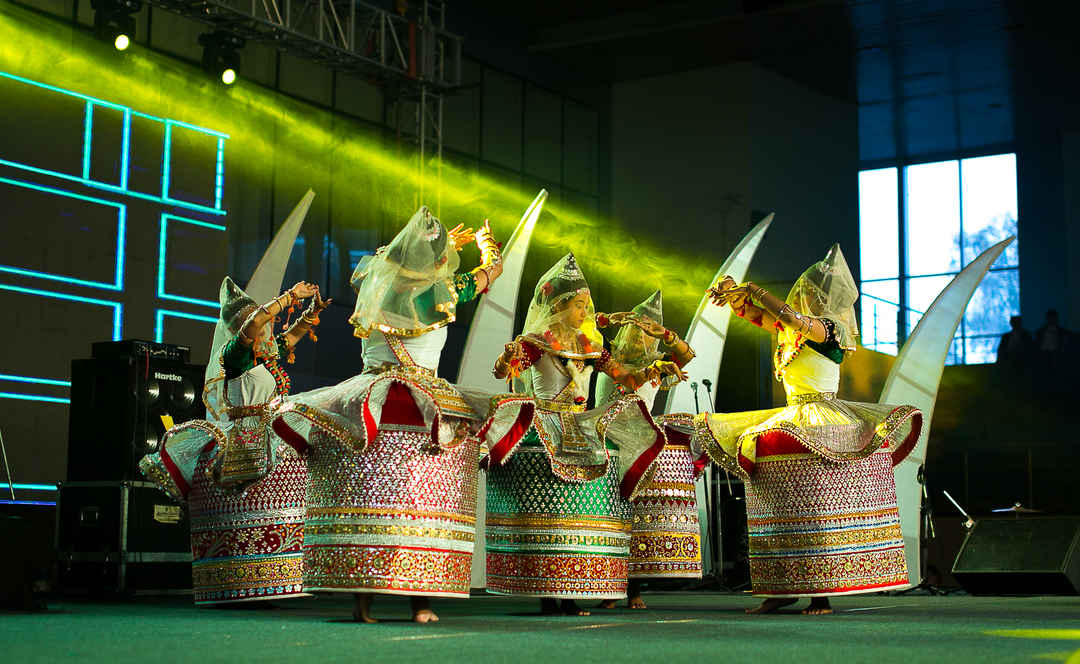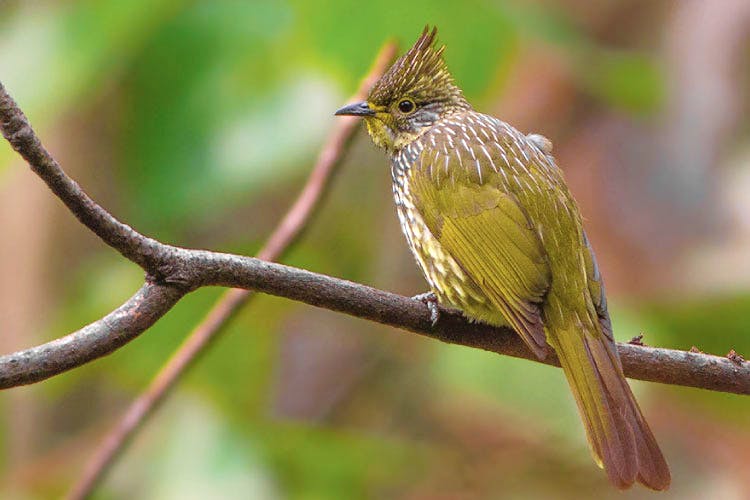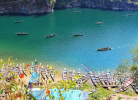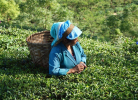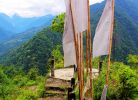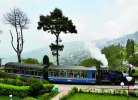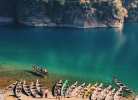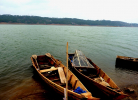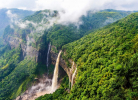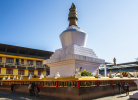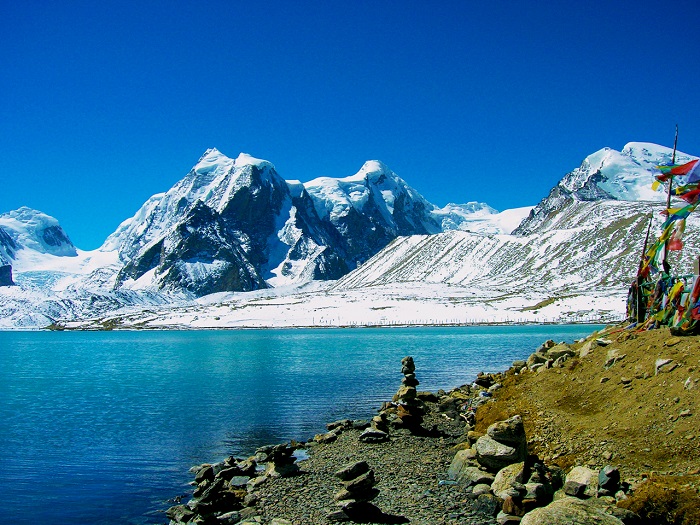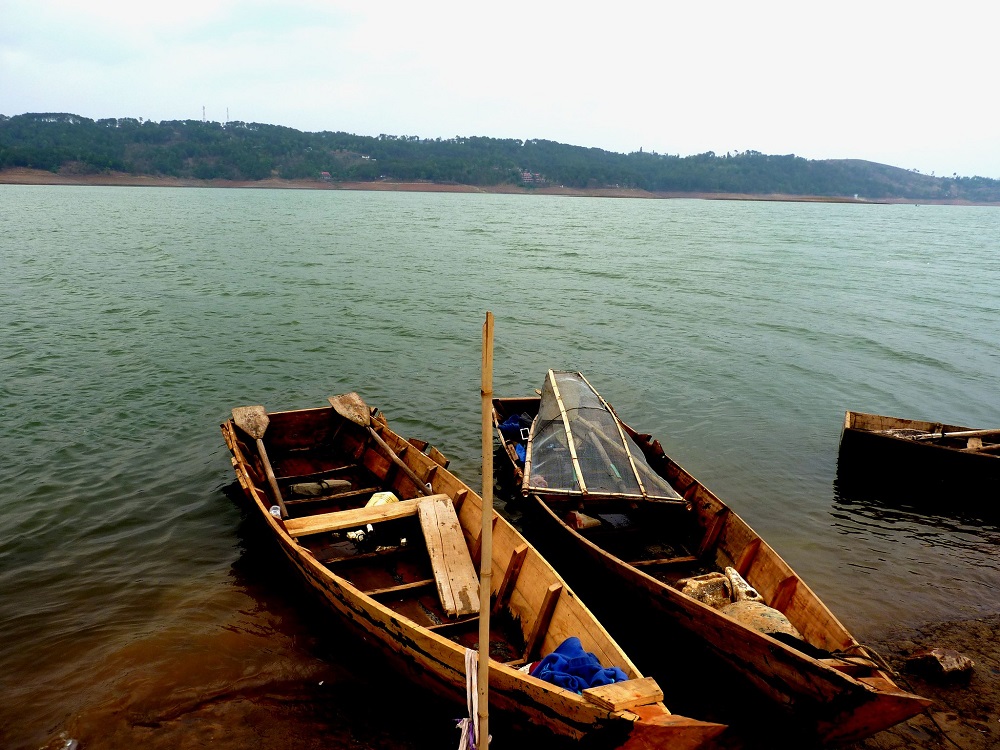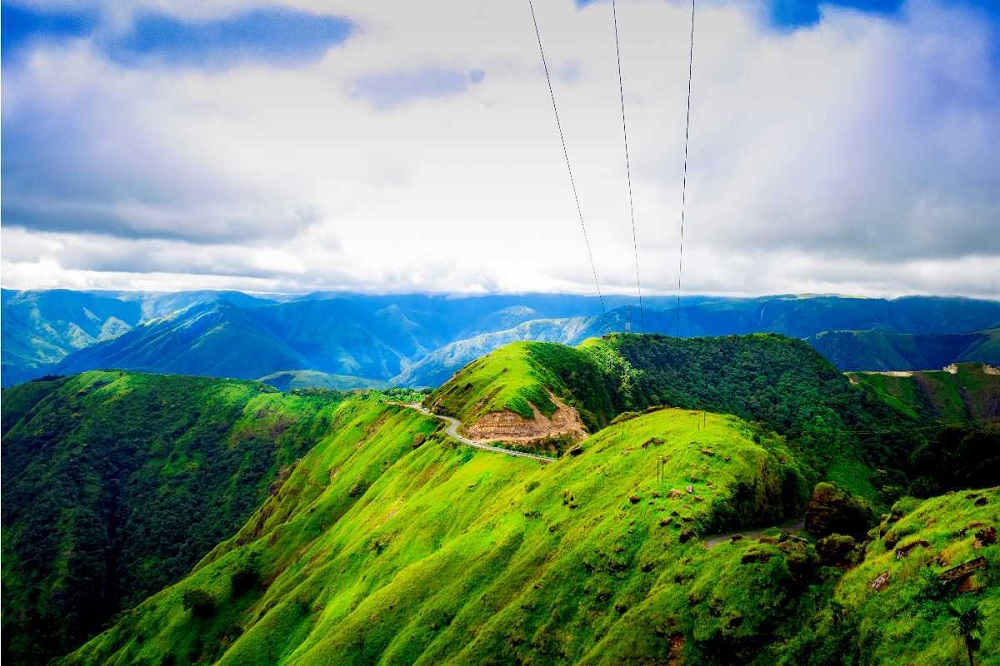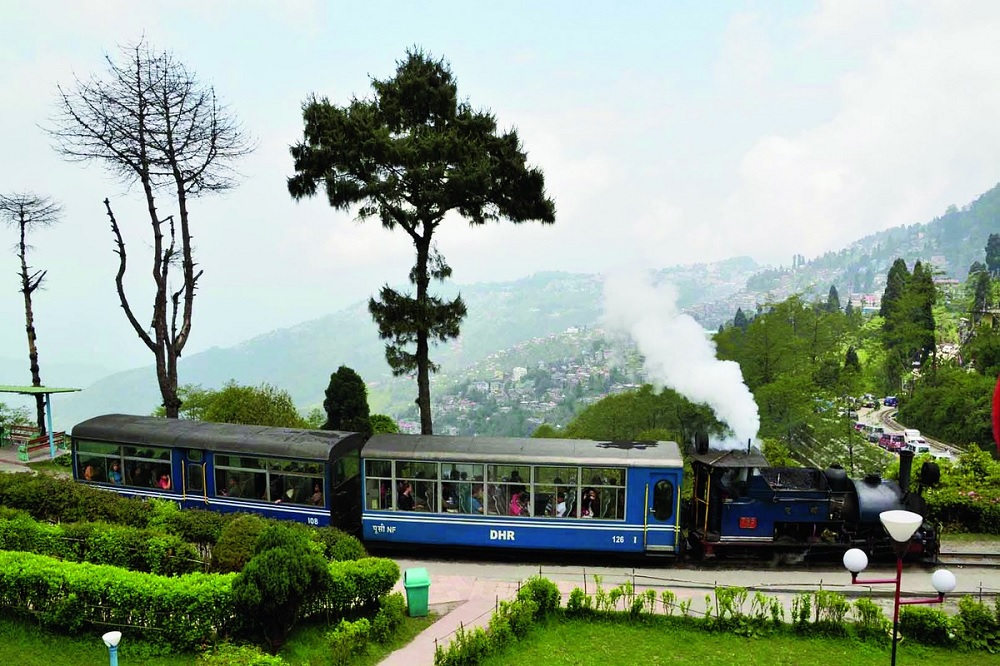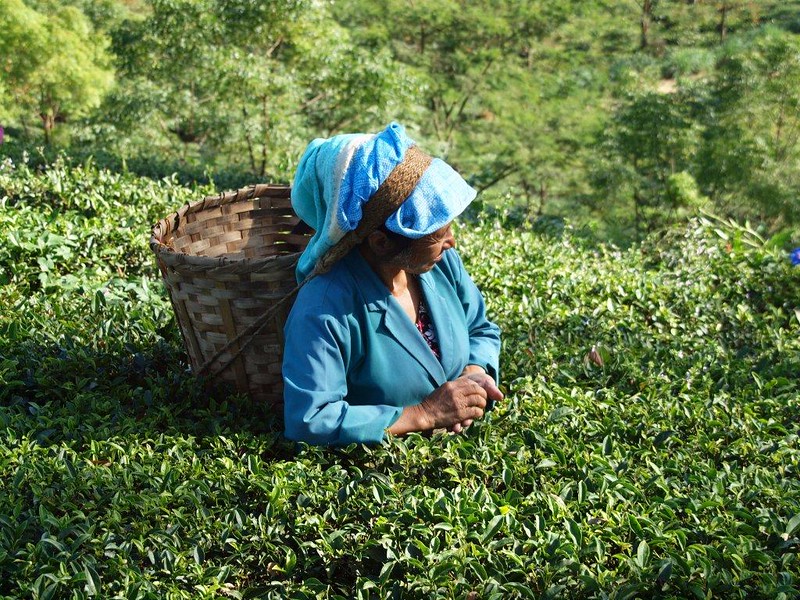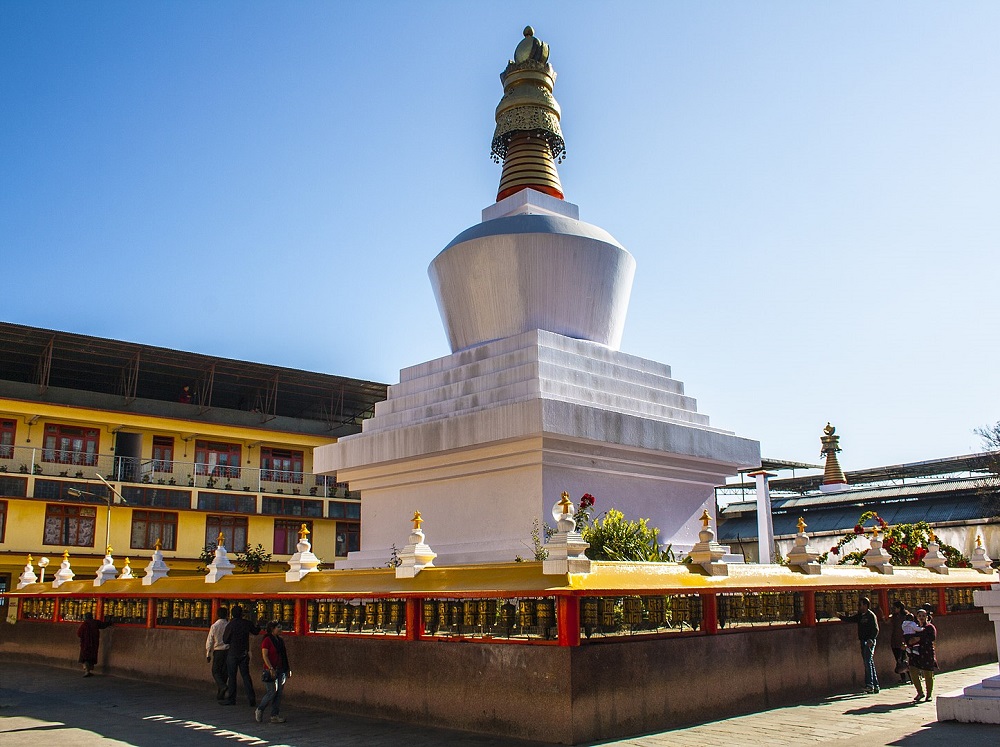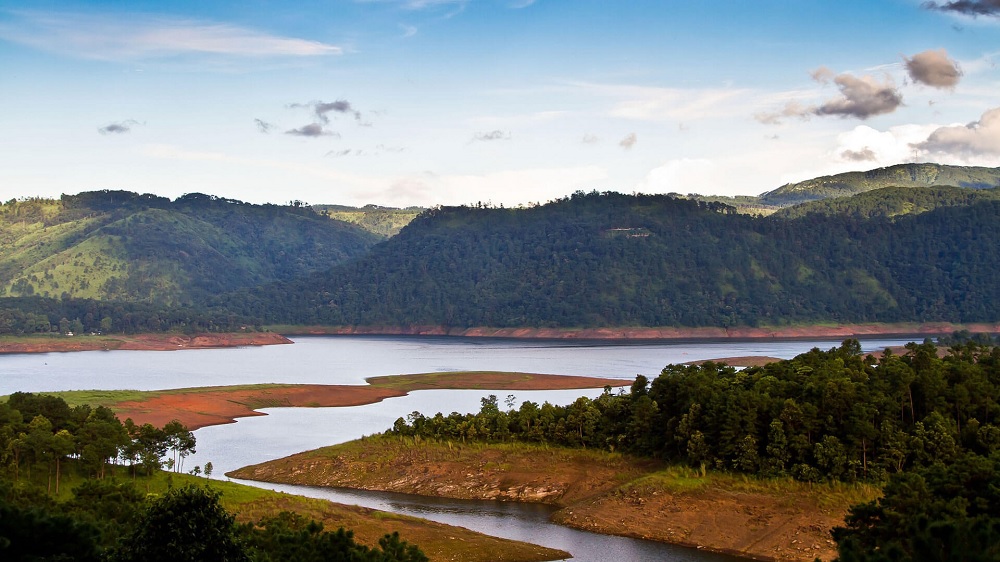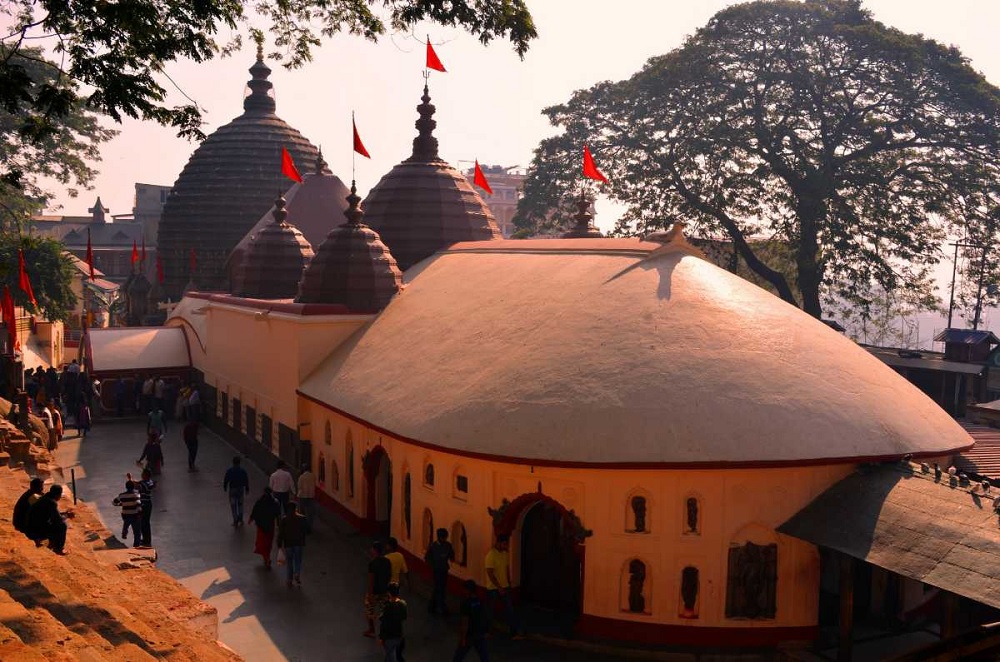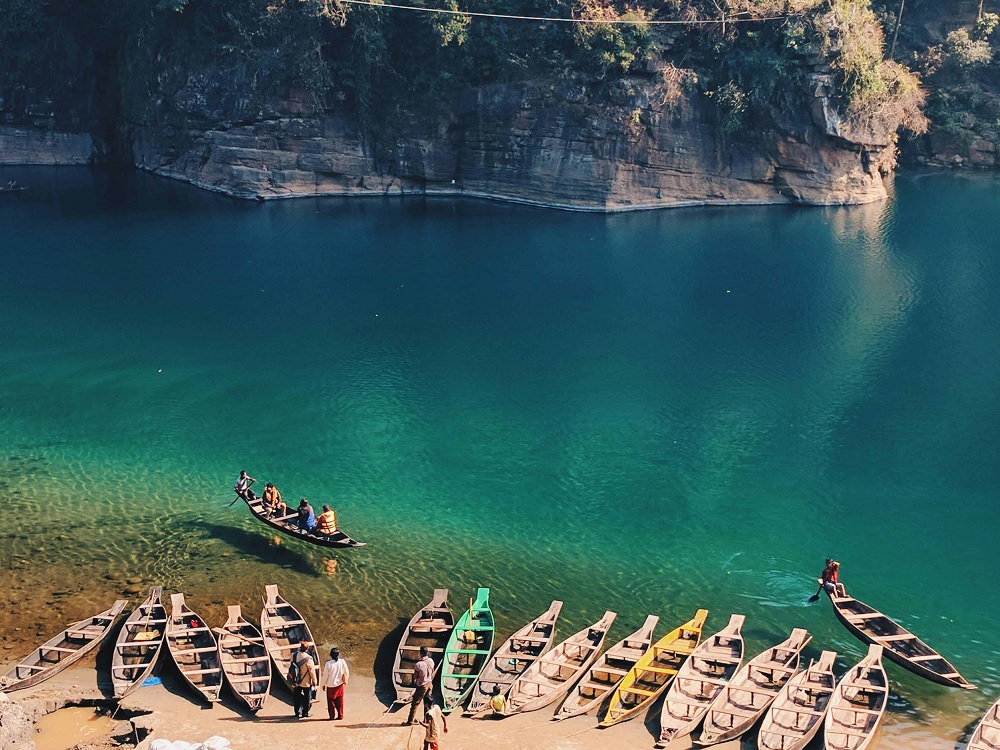Culture of North East India
Northeast, besides being a place of breathtaking landscapes, is a place rich in culture and heritage. We have elaborated the rich culture of northeast.
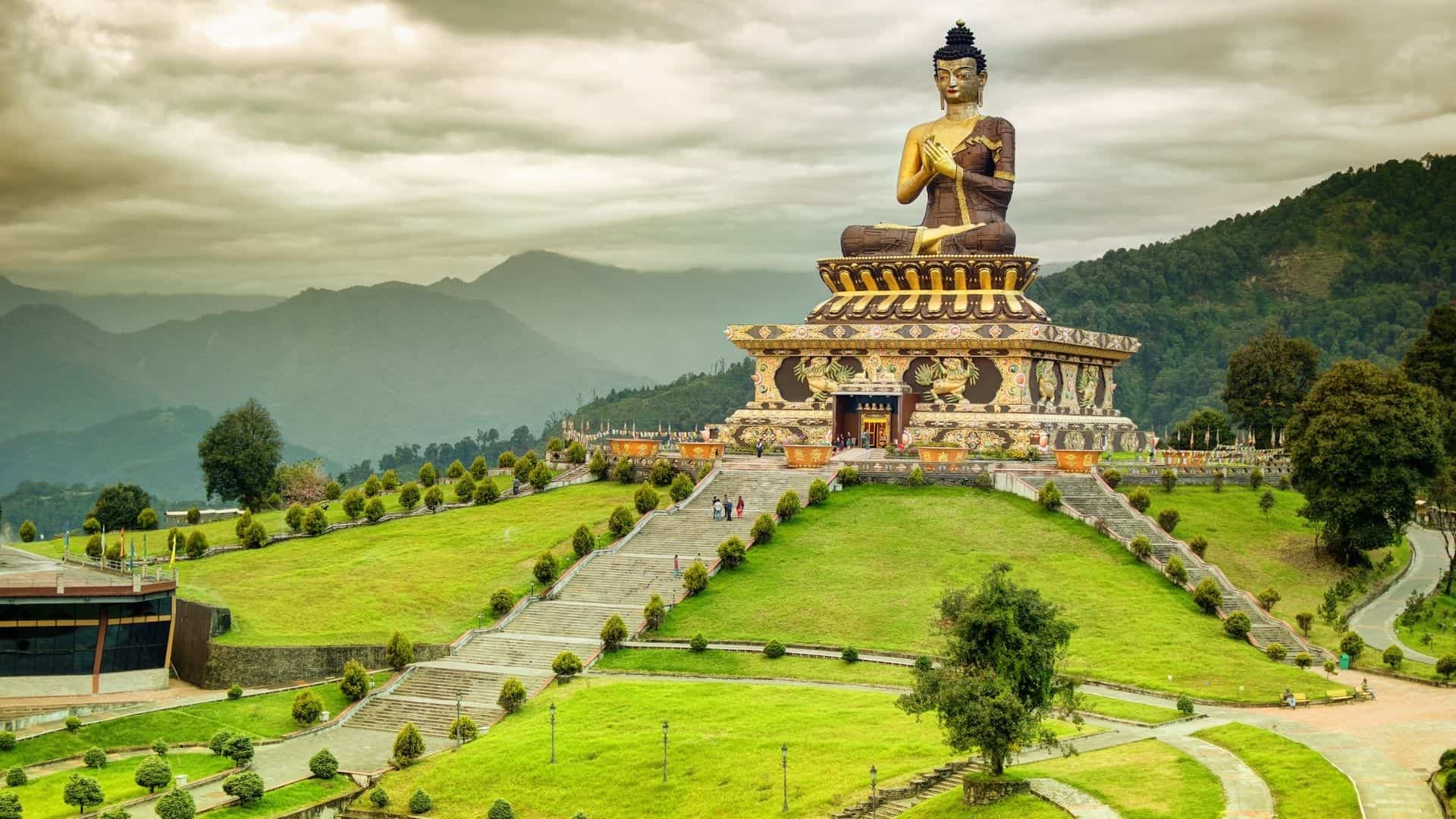
1. History
Kamarupa was the first kingdom ruling over the northeast that existed from 350 CE to 1140 CE before getting dethroned by the Ahom Kingdom. During the early 19th century, the Ahom Kingdom got defeated in Burmese invasions as a result of which the Ahom Kingdom fell under the control of Burma. During the late 19th century, the British invaded Burma and ruled till independence. In 1944, the Northeast fell prey to Japanese attacks during world war II. But British and Indian soldiers successfully fought the Japanese troops. In 1962, the northeast region faced political pressures and war attacks from China in an attempt to claim Arunachal as South Tibet. The seven sisters states were inaugurated in 1972. Sikkim became a part of the northeast in 2002.
2. People
Most of the ethnic groups of the hilly regions have their origins in Myanmar, China, and Thailand who were also the earliest settlers. The plain area consisted of people from the Ahom kingdom. According to the 2001 Census, a total of 38 million people has been recorded. Around 160 Scheduled Tribes have been listed in the Sixth Schedule of the Indian Constitution.
3. Language
In the Indian subcontinent, the Northeast constitutes about 220 languages. Assamese is an Indo-Aryan language that is spoken mostly in the Brahmaputra Valley of Assam and is the mother tongue of many communities. Other languages such as Nagamese and Nefamese are Assamese-based pidgin spoken in Nagaland and Arunachal respectively. Khasi, Jaintia, and War the language of the Austro-Asiatic family. Some Tai–Kadai languages include Ahom, Tai Phake, Khamti, etc. Other languages that have origins in the Sino-Tibetan region are Bodo, Deori, Missing, Rabha, Karbi, Tiwa, Biate Garo, Hajong, Angami, Lotha, Mizo, Chakma Tanee, Nisi, Adi, Abor, Apatani, Misumi, etc. Bengali is also widely spoken in lower Assam and Tripura as the majority constitutes illegal immigrants from Bangladesh. Nepali is widely spoken in Sikkim.
Official languages
Many languages of the northeast are recognized as the official languages of the country. Assamese is an official language spoken in Assam and Arunachal. Bodo is another official language of Assam. The Manipuri language Meitei is the official language in Manipur. Nepali is another official language spoken by the majority in Sikkim. Santali is also spoken in many parts of Assam, Mizoram, and Tripura.
4. Literature
The heritage of folktales is quite popular in the northeast that tells the story of the origin, rituals, and beliefs of different communities. Assam and Manipur have ancient written texts to their legacy. These states find mentions in the great Hindu epic Mahabharata as well. The region has also witnessed the rise of modern literature in the 20th century. Most of the writers in the region write both in their mother-tongue and English mostly about the region’s folklore, insurgency operations, Battles of the northeast, and many more. Two authors from northeast Birendra Kumar Bhattacharya and Mamoni Raisom Goswami have won the highest literary award in India.
5. Facts
Many interesting facts surround the northeast region. The sun rises first in a valley in Arunachal in India. Assam is home to the world’s largest weaving village. Around 70% of Northeast’s terrains are covered by hills. India’s first and oldest oil refinery is in Digboi, Assam. Around 70% of the orchid species of India are found in the northeast. The northeast is the only region in India, which the Mughals fail to occupy.
6. Religion
Northeast is home to people of diverse religions. In the state of Assam Hindu, Muslims, Christians, Buddhists, Sikhs reside with the majority being Hindu. However, Lower Assam has a Muslim majority because of a heavy illegal influx of Bangladeshi migrants. Hindu ethnic groups consist of Assamese, Koch, Rabha, Dimasas, Ahom, Suriya, Meitei, etc. Buddhist groups are mainly migrants from Tibetans, Tamang, etc. Christian ethnic tribes include Garos, Mizos, Nagas, etc.
7. Occupation
Agriculture and weaving are the two major occupations of the northeastern people. People indulge in rice and pulses cultivation along with minor and major crops. Tea farming in Assam is one of the main sources of livelihood of people with a vast number of people employed in tea estates. Other major works include traditional handicrafts, wood carvings, handlooms. Silk Muga handlooms in Assam are exclusive in the country. A major section is also employed in the oil and gas industry due to its presence in most of the region.
8. Lifestyle
Though the seven states are interdependent, their lifestyle differs widely based on region, caste, and tribe. The people in the Hilly regions lead a simple lifestyle full of hardships for daily living. The tourism sector helps a lot in their livelihood. Hunting and fishing are the prime occupations in such areas. Agriculture is an important part of the northeastern lifestyle. Most people believe in living a simple lifestyle with high values and morals. They are very warm and loving. Both women and men enjoy equal opportunities and status. The concept of dowry is not prevalent in any of the communities of the region.
9. Cuisines
Northeast is popular for its various indigenous and ethnic cuisines of all the states. The cuisines are rich in naturally grown ingredients and herbs. The foods are less spicy and mostly prepared in boiled form. Non-vegetarian meals are consumed in the highest numbers. Some of the popular must-try cuisines are momo, Eromba, shaphaley, fish Tenga, duck meat, fish stew, roast pork, bamboo shoot, Peetha, Teel Ladu, etc. Drinks of the region mostly include different variants of black tea, purple tea, golden tea, green tea, etc. Naturally prepared rice beers that go by the name xaaj, Sai mod, Rohi are highly consumed during occasions.
10. Festivals and Fairs
Northeast has been hosting several fairs and festivals for decades. Some traditional festivals that are hosted annually are BihuFestival, Nongkrem Dance Festival, Chapchar Kut, Wangala Festival, Kang China, etc. Bihu is an important festival of Assam. BohagBihu is the most popular one celebrated in Assam. Different parts of the region celebrate this festival with much zeal and enthusiasm. Nongkrem dance festival is the way of celebrating the harvest by the Khasi tribe of the region. Chapchar puja is a festival celebrated in Mizoram in March. There are several music festivals such as NH 7 weekender, Ziro festival, etc are hosted every year. The Northeast book fair is held every year in Assam. Film festivals are also an important part of Northeast’s fairs and festivals. The state of Sikkim hosts an international flower show every year.
11. Music and Dance
Northeast is home to different genres of music. Each state has its own folk music and dance. Each community of a state has its own rich heritage of folk music and dance. Northeast has produced a plenty of talented musicians, singers, and dancers. are plentifully found in this part of the country. Some of the popular dance forms of the northeast are Bihu, Naga dance, Hajgiri, Nongkrem, Thang-ta, and Dhoi Cholom, etc. Some of the folk songs of the region are Bihu, Luko Geet, Tokari, Borgeet, Nongthang Leima, O Rhose, etc. The popular dance form Sattriya from Assam and Manipuri dance is classified under the list of classical dances of India.
12. Arts and Crafts
The tradition of art and craft culture is quite rich in the region with every state having its unique craftsmanship qualities. Arunachal and Mizoram’s craftsmanship abilities are evident from astonishing carpet making, cane crafts, masks, painted wood vessels, bamboo and, weaving, woodcarvings, hand-made pottery, brass cutting, silver works, etc. Assam is dominant in agriculture coupled with handloom weaving, cane and bamboo works, etc. Besides other woodworks, Meghalaya’s specialties include crafting musical instruments. For the rest of the states, weaving and wooden works are a specialty including jewelry and ornaments crafting, hunting, etc.
13. Wildlife
Northeast is home to numerous national parks and wildlife sanctuaries blessed with exotic species of flora and fauna. Arunachal Pradesh is home to the third national park in India - Namdapha National Park popular for its endemic Namdapha flying squirrel. The one-horned rhino in Kaziranga, Assam is another exotic and endangered wildlife animal. Keibul Lamjao National Park in Manipur is the world's only floating national park with the only natural habitat of the dancing deer, Sangai. Sirohi National Park in Manipur is home to the beautiful terrestrial lily, Shirui lily found nowhere else in the world. Manas National Park in Assam is a project tiger and elephant reserve added to the UNESCO Natural World Heritage Site. The entire northeast region is home to around 22 national parks and wildlife reserves.
14. Tribes
The northeastern part of India is known to be the world’s most culturally diverse region. The region is inhabited by more than 200 tribes, who boast of their indigenous and authentic traditions. Some of the most popular tribes are the Bodo tribe, Adi tribe, Nishi Tribe, Bhutia tribe, Garo tribe, Kuki tribe, and so on. The Bodo tribe is considered the heroic tribe of Northeast India. The Adi tribe is widely found living in the hills of Arunachal with their own village council. Another tribe of Arunachal in the Nishi Tribe who have originated from the Indo-Mongloid tribe. The major tribe of Nagaland is the Angami tribe. The Bhutia tribe is the inhabitants of Sikkim believed to be migrated from Tibet. They are one of the most developed and cultured tribes of the region.
15. Tourism
The entire northeast region plays an indispensable role in the tourism sector of the country. Arunachal places host various places of worship and pilgrimage including the largest monastery in India. Assam is the central state of the northeastern region. It has a number of wildlife reserves and sanctuaries, Asia’s largest river island. Manipur hosts natural parks, natural lakes, war cemeteries, etc. Meghalaya is often referred to as the home of clouds with thickets surviving forests in its embrace, waterfalls, mountain ranges, beautiful lakes, and more. Mizoram’s rich bird diversity makes it an ideal place for bird watching along with other endemic species of animals. Sikkim is home to the world’s third-highest mountain, monasteries, waterfalls, etc. It is also a paradise for trek lovers.


